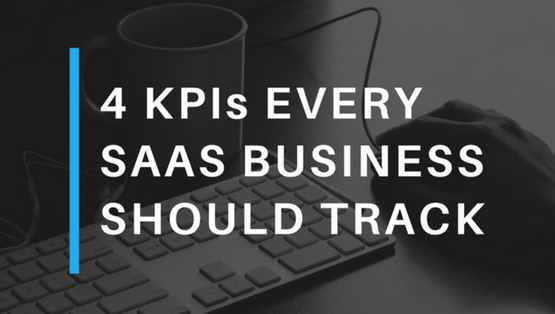4 KPIs Every SaaS Business Should Track
For many SaaS businesses, it’s easy to obsess over tracking every performance metric out there. But, the problem with this is that it is neither productive nor efficient.
Did you know the most successful SaaS businesses narrow their focus to just a few key metrics? You’ve likely heard the acronym KPI, which is short for Key Performance Indicator. The term is a fancy way to refer to the metrics that are most critical for tracking the success of your business.
A set of KPIs will be different for every business. But, there are a few KPIs every SaaS business should track.
Churn Rate
Churn measures the number of people who cancel their subscriptions or leave a service within a certain time period (i.e. every month). Every industry has different reasons for customer churn, but in SaaS, the number one churn driver is a lack of use. Also, your churn rate can quickly get out of control if you are not tracking it.
If you have a high churn rate, the best way to combat it is to talk to your customers. Your business can conduct user interviews and use surveys to get a better understanding of how you can improve your product. Another way to fight churn is by keeping your customers informed (via email and social media) when you release new features and product updates.
Monthly Recurring Revenue (MRR)
Monthly recurring revenue is the amount of total revenue you had during the month from recurring subscriptions. Tracking monthly recurring revenue allows you to see exactly how your business is doing month-to-month. It also keeps your SaaS business focused on the present.
MRR is a simple but powerful metric that supplies insight when analyzing new sales, upsells, renewals, and churn on a monthly basis. Having annual plans on top of your regular monthly plans can also complicate things for tracking MRR. Upgrades and downgrades can also become tedious to track.
Customer Acquisition Cost (CAC)
Customer acquisition cost (CAC) shows how much you have to spend to get one new customer from a particular source. To calculate CAC, add up your entire marketing and sales expenses over a month and divide that by the total number of customers you gained in the same period.
It is also a good idea to go a step further and segment CAC by acquisition channel. This will help SaaS businesses test new channels for growth and determine if the acquisition cost is too high for certain ones. Typically, you will want to lower acquisition costs as much as possible.
Customer Lifetime Value (CLTV)
Customer Lifetime Value measures the average amount that a customer is worth during their relationship with your business. A SaaS businesses CAC should never be higher than its average CLTV. According to HubSpot, “a healthy business should have a CLV that is at least three times greater than its CAC. Any lower (say, a 1:1 ratio) and you’re spending too much money.”
We’ve written about Customer Lifetime Value and how to calculate it before so we won’t go into too much detail. You can read more about it here: Calculating Customer Lifetime Value.
By tracking just a few KPIs a SaaS business can drive higher quality traffic, improve on-site engagement and, most importantly, increase conversions and sales. But, every SaaS business is different and you need to calculate the metrics above based on your unique circumstances and then examine ways to improve them. Ultimately, this will allow you to make the most of your time and money to drive your business decisions and strategies in the most effective way.




1 Comment
Nguyên · January 8, 2018 at 10:52 pm
MRR, CAC, CLTV Thank you for giving me new insights into business.